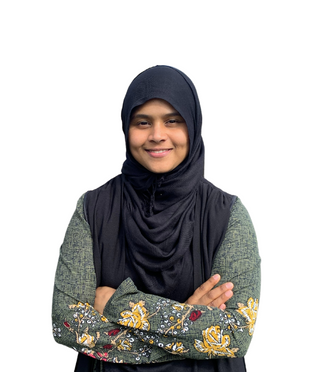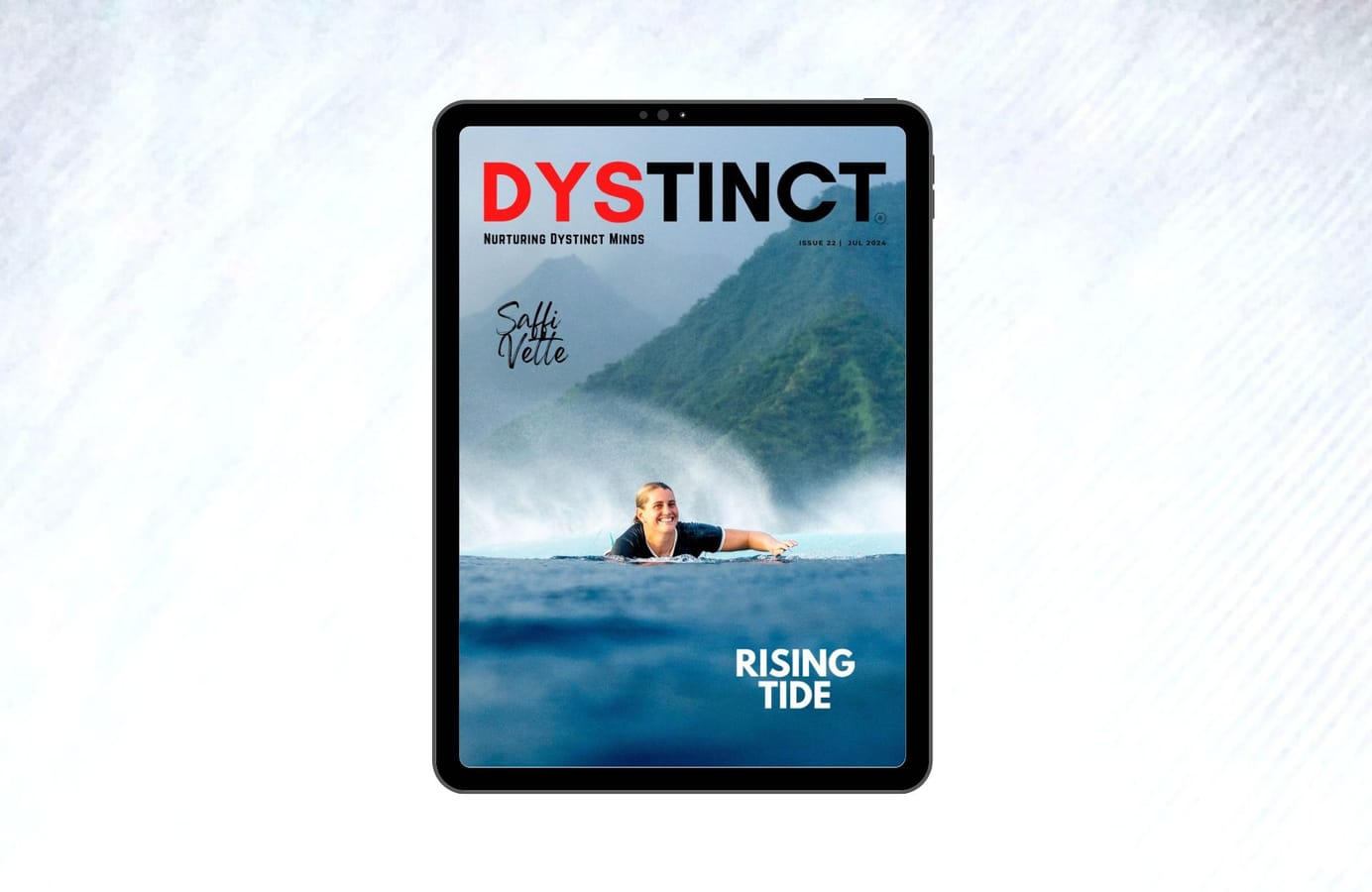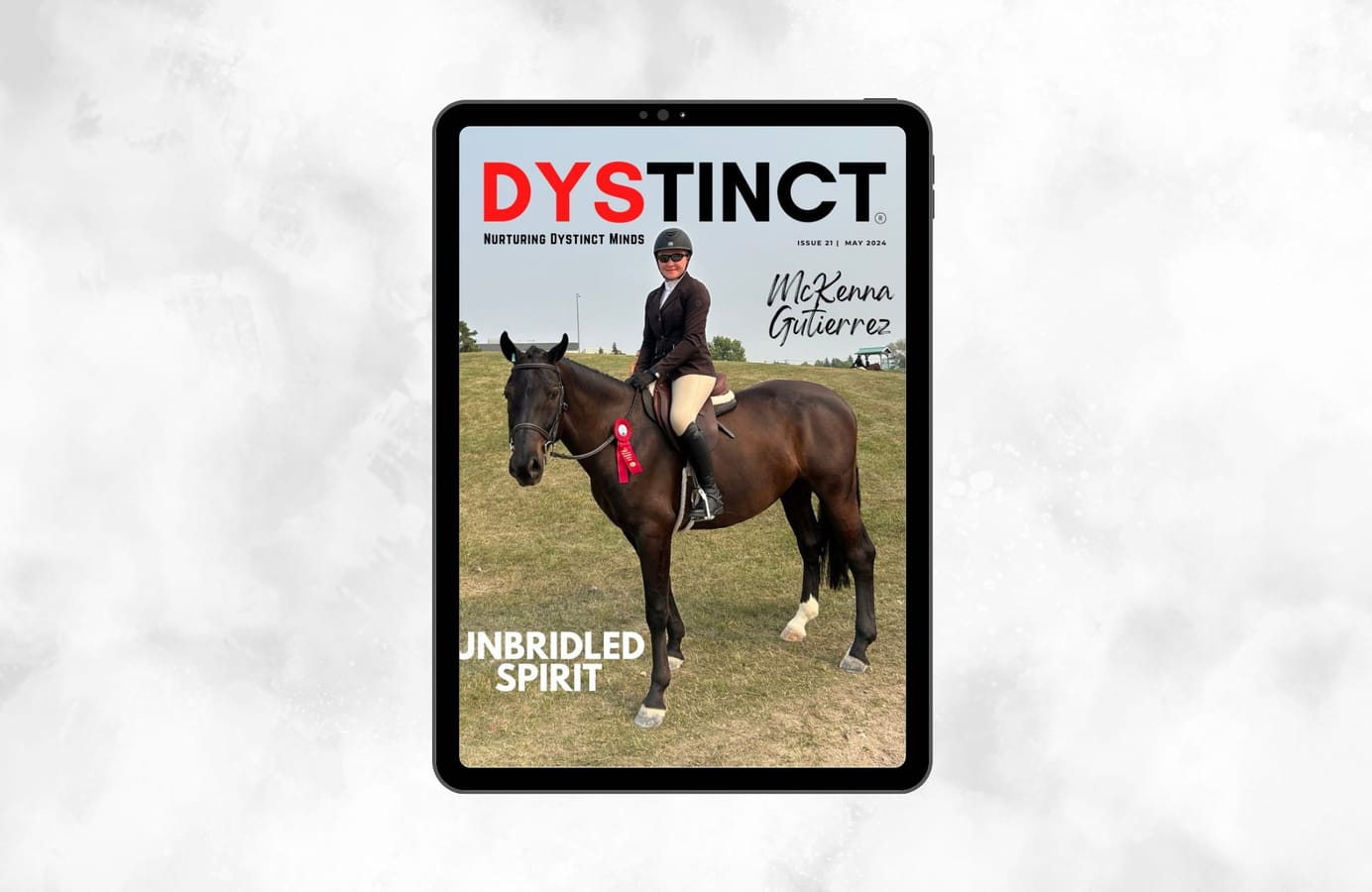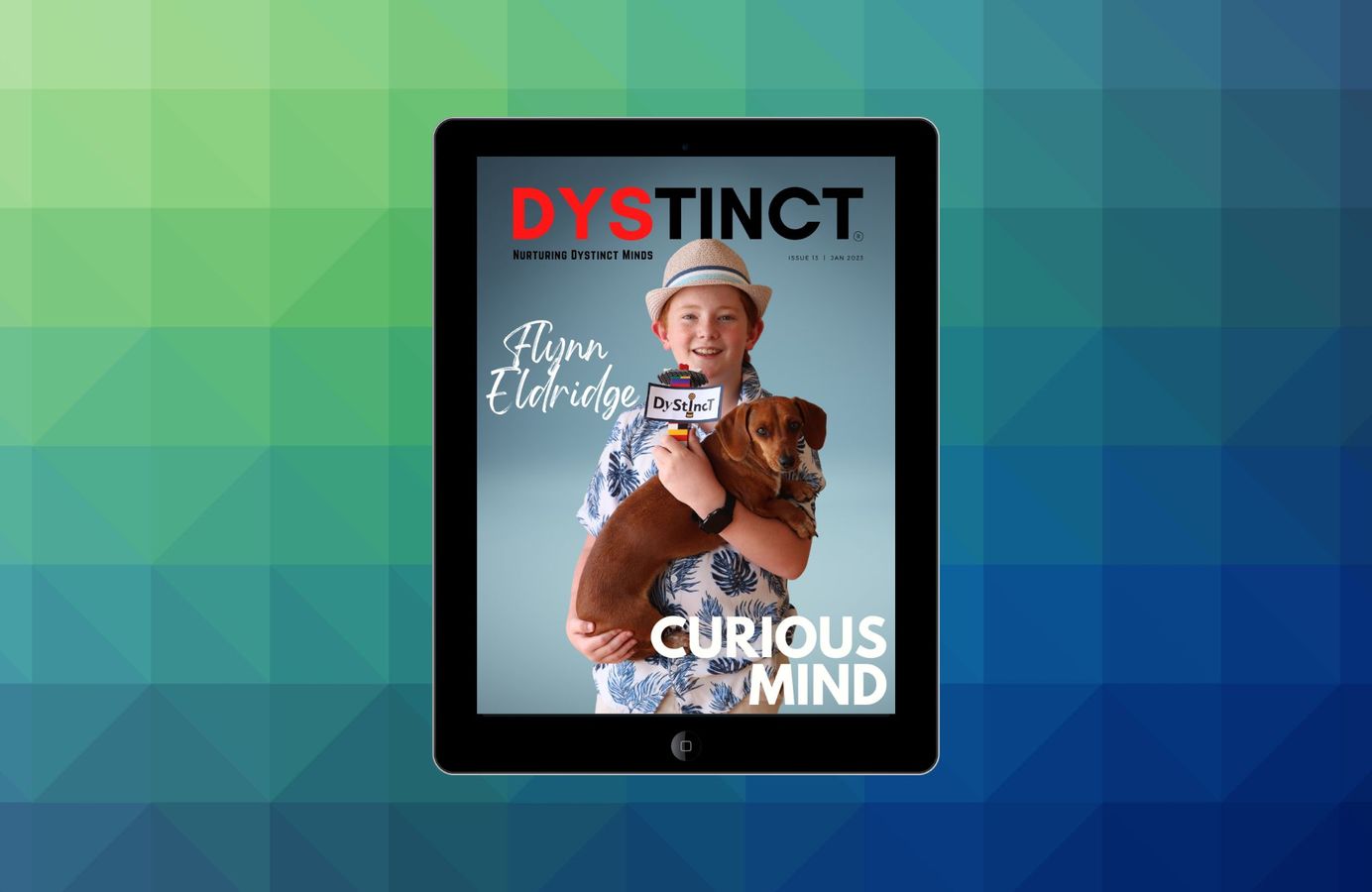
Issue 13: January 2023 Dystinct Magazine
Dystinct magazine's 13th issue: January 2023 is available to download on Apple and Android devices. The issue covers inspirational stories from children and adults with learning difficulties (dyslexia, dysgraphia, dysgraphia and dyspraxia).
- How to Access Dystinct Magazine
- On the Cover
- Topics covered in this issue (includes links to access on website)
- Editor's Note
HOW TO ACCESS DYSTINCT MAGAZINE
👉 Access all the content of the magazine on the website layout. Read further below to check links to each article in Topics covered in this issue
The magazine can be accessed on your mobile and tablet devices.
👉 Apple App Store - iOS iPad/iPhone
👉 Google Play Store - Android devices
👉 Libby Apple iOS | Google Android
👉 Zinio Newstand | MagsFast Newstand | Magzter Newstand
ON THE COVER
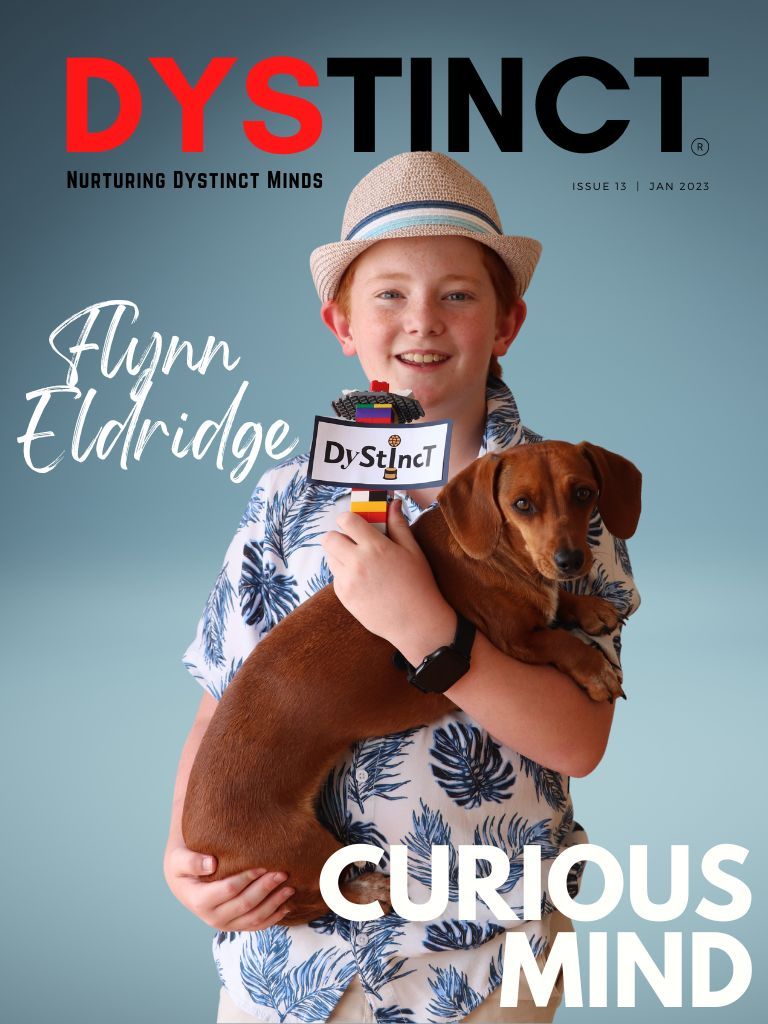
On the cover is Flynn Eldridge.
Flynn Eldridge is ten-years old and is from NSW, Australia.
Flynn finds reporting fun, sometimes scary, and ultra exciting. Flynn likes to dress up as an old-time reporter and ask a range of questions, as that is his style. Flynn builds loads of different lego creations such as the rainbow, spinning-top microphone he uses in the interview.
TOPICS COVERED IN THIS ISSUE
The January 2023 issue of Dystinct Magazine brings to you:
Donna Hejtmanek and Mary Rudzinski describe some of the factors holding back a shift in classroom practices and suggest some steps that can be taken to step off the current dismal trajectory to improve student outcomes.
Ten-year-old journalist Flynn Eldridge has a chat with Donna Hejtmanek about her Facebook group, The Science of Reading- What I Should Have Learned in College, and her viewpoints on the Structured Linguistic Literacy approach.
Dr Marnie Ginsberg explains the three key principles guiding the pedagogical choice in the Structured Linguistic Literacy Approach to teach learners, including those with dyslexia, skilled decoding without the use of rules and syllable types.
Jennifer Newman describes the various elements of EBLI instruction and how adopting a shift from Print to Speech to Speech to Print orientation has made a significant difference in her students' acquisition of foundational reading and spelling skills.
Clair Wilson emphasises the importance of step-by-step progression in literacy instruction and lists some engaging ways of reinforcing instruction with games and activities to help beginner and struggling readers along their journey to independent reading.
Nicki Prati shares how Structured Linguistic Literacy helped lift the burden of cognitive overload and lightened the process of learning to read for her daughter, who spent years unsuccessfully trying to achieve mastery using various programs based on Print to Speech approaches.
The story of how 10-year-old Flynn Eldridge has found his "bright" and "quirky" back after a rough start to school. His parents, Carrie and Anthony Eldridge reveal how they homeschool their neurodiverse children and support them in pursuing their passions.
Nora Chahbazi recounts her journey of how she went from being a Neonatal ICU nurse to establishing EBLI and making teaching to read her life's work.
Nora Chahbazi describes the logic underpinning the efficiency of the Structured Linguistic Literacy approach and demonstrates how it differs from the two other widely known approaches to reading instruction; Balanced Literacy and Traditional Phonics.
Julie VanLier, a kindergarten teacher at a high-poverty school in Southwest Michigan, shares the story of how her class of 28 students went from "on track for reading failure" to 20 points above the goal when she made the switch from Balanced Literacy to EBLI.
The story of Nancy Dressel, a neurodiverse mum who desperately tried to seek help for her children's ongoing challenges with learning difficulties for over a decade. When help finally arrived in the form of a 3-day EBLI workshop, it ended up changing her life too.
Amy Manning describes her 24-year journey starting with balanced literacy in the early years of her career as a kindergarten teacher to discovering EBLI after setting on a mission to uncover everything there was to know about how a struggling reader learns to become proficient.
Dr Svetlana Cvetkovic clarifies the confusion around the term "sight word", explains how sight vocabularies develop, and sheds light on both optimal and nonoptimal instructional practices from a Structured Linguistic Literacy perspective.
Clare Wood recommends effective instructional practices aligned with the Structured Linguistic Literacy approach that parents can adopt to help their children systematically learn concepts and skills in tiny sequential steps that lead to mastery over time.
Erin Sain, a dentist by day and reading advocate by night, shares how she discovered the Structured Linguistic Literacy approach in her quest to find an effective and time-efficient instructional method that would help her teach her girls to read.
The story of Ann, a successful Florida-based marketing executive who struggled to read and write in private all her life until she was recently taught the right way to read using the Structured Linguistic Literacy Approach. Ann now wants to spread awareness for this approach to teaching reading as the price of not talking about sub-literacy is too high.
Dr Jeannine Herron discusses the need for children to develop the ability to use the alphabet code independently and provides pointers on how parents and educators can help them establish automatic encoding and decoding skills.
Wendy Crick, a middle school English teacher, shares her quest to find an answer to her daughter's reading struggles. She tried various reading programs as her daughter's confidence kept dipping with each failed attempt at being taught to read before she finally found success with EBLI.
By 62, David Chalk had seen it all. He was a popular media personality, had built his business empire, made millions, was awarded a doctorate in technology by the University of the Fraser Valley for holding the world's only true patent in cyber security, and was described as having a brilliantly gifted mind. While David conquered the world, he never managed to achieve the only thing he always had truly wanted-To Read Fluently. In 2021, he finally learned to read and did it on camera for everybody to see. David's story is one of many stories featured in the documentary film The Truth About Reading that aims to change the conversation around literacy by highlighting illiteracy, sub-literacy, and learning disabilities, including dyslexia. This article is about how David has finally found joy and peace after 62 years of feeling like an imposter and his plea to parents to help their children find the same joy.
EDITOR'S NOTE
~ Ralph Waldo Emerson
This issue was five months in the making, and it’s been a huge learning process for me. So, rather than my usual one-page editor’s note, I’m going to write my honest reflection of what I’ve learned over the past 5 months during the making of this issue.
As a parent trained in MSL, an approach to literacy instruction developed by the Australian Dyslexia Association based on the Science of Reading research, I, too, like most aware parents and educators, follow all the SOR pages and groups on social media to keep myself up-to-date, so I can advocate for my children at school. Recently, I was surprised to learn from Donna Hejtmanek’s Facebook group - The Science of Reading-What I Should Have Learned in College, that apart from the two most talked about instructional approaches, the Balanced Literacy and Systematic Synthetic Phonics (SSP) approach, there was a third approach. Referred to as Structured Linguistic Literacy, this approach is not new! It’s been around for more than 20 years but has been receiving a lot of attention of late.
My understanding was that the orientation of all Systematic Synthetic Phonics based programs and approaches were Print to Speech based and Balanced Literacy was just guesswork and wishes, so the idea that another approach existed that could teach children from a reverse perspective of Speech to Print caught my attention. What particularly stood out for me was how quick remediation was using this approach. I read posts about struggling readers hacking the code after receiving as little as 5-10 hours of instruction. If an adult taking hours to compose the perfect email free of errors or a struggling child assigned to be pulled out of the classroom for additional lessons could be taught to read and write in just 10-15 hours using a different approach than what I knew, then I too wanted to learn more about it.
I immediately joined the FB S2P / Linguistic Phonics Exploration group to learn all I could about the Structured Linguistic Literacy approach so I could incorporate elements of the approach into my practice. At first glance, it didn’t seem much different to how I have been trained to deliver literacy instruction in my training, but I was fascinated by post after post from thrilled parents about how quickly their children were progressing. After 6 months of hanging around the page and watching free videos about the approach kindly shared by Dr Marnie Ginsberg and Nora Chahbazi, I have come to realise that the orientation of instruction is based on teaching learners the alphabetic principle through speech sounds rather than written letters as we do in Systematic Synthetic Phonics and Balanced Literacy approaches.
There are no flashcard drills or cognitively heavy rules, patterns, and exceptions to those rules to remember. The whole instruction seems simple but efficient and revolves around using just a whiteboard and marker and seems to integrate reading and spelling instruction within the same activity rather than as consecutive activities within the same session. I do have reservations about how children can go on to master spelling, but I’m still learning about the approach and have yet to try teaching a student with this approach to comment on it. I strongly believe that a child’s progress reflects the competence of the educator. OG is an approach based on evidence. There are several programs developed based on the OG approach, and many people train in those programs for just a few hours and call themselves specialists. Following a premade program without fidelity to the approach or the child’s needs can be harmful, which is what I believe has happened to the children and adults whose stories are featured in this issue. My OG based training has worked well for the handful of students I’ve worked with and thousands of students that specialists I personally know have worked with. Still, if something is working well, that doesn’t mean we don’t have to be curious about another excellent approach that could work just as great or even better. Learning new things can open our minds in ways we have never imagined before. I’m hoping to learn something new this year. So, this issue has been put together with the intention of creating a conversation of curiosity rather than animosity between Synthetic Phonics and Structured Linguistic Literacy specialists.
This issue features articles from Structured Linguistic Literacy specialists discussing the various aspects of this approach, stories of educators who have shifted to Structured Linguistic Literacy from other approaches and why they made the shift and stories of children and adults who found this approach after years of struggling to learn to read. I hope the articles and stories in this issue inspire you to go on your own curious journey to stretch your mind.
The terms Speech to Print (S2P) and Linguistic Phonics are used in some articles in this issue, and they both refer to the Structured Linguistic Literacy approach.
I hope you enjoy reading this issue and all the specialist content covered.
Please get in touch with me if you have any feedback, ideas, or stories to share to change the narrative surrounding learning disabilities.
Thanks
Zahra Nawaz Shafeeq

